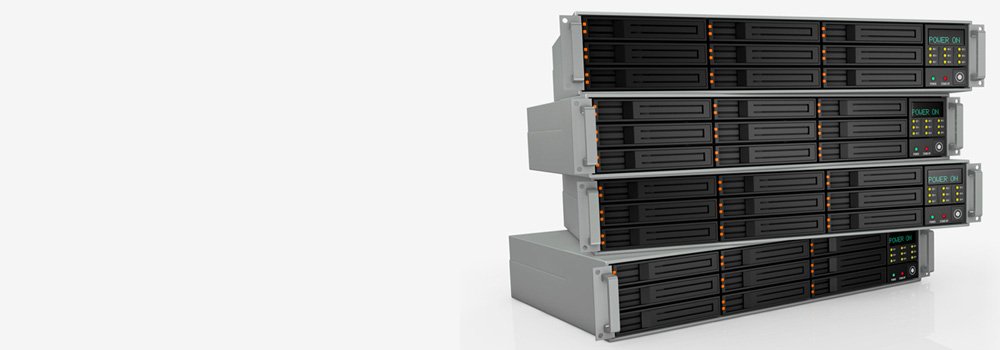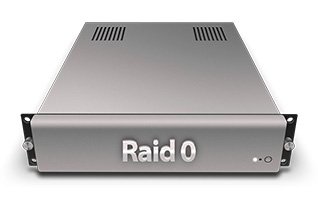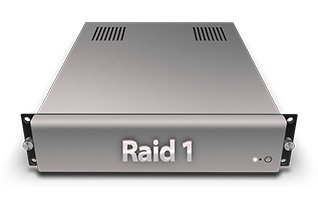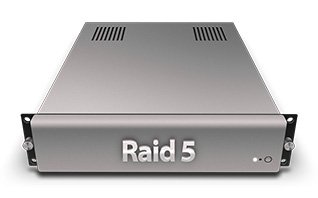RAID 1 Failure Recovery
We deliver engineering-grade recovery for RAID 1 mirrors across home, SME and enterprise environments—2-disk mirrors through multi-pair mirrored sets inside servers, DAS and NAS. We regularly handle escalations from enterprises and public-sector teams.
How to send drives:
Label each disk with its bay/slot order and enclosure/controller make/model. Place each disk in an anti-static bag, cushion well in a padded envelope or small box, include your contact details, and post or drop them in. We clone every member first and only work from those clones (forensic, write-blocked handling).
UK NAS brands we most often see (with representative popular models)
-
Synology – DiskStation DS224+, DS423+, DS723+, DS923+, DS1522+; RackStation RS1221+, RS4021xs+
-
QNAP – TS-464, TS-473A, TS-873A, TVS-h674; rack TS-x53DU/x73AU
-
Western Digital (WD) – My Cloud EX2 Ultra, EX4100, PR4100
-
Seagate / LaCie – LaCie 2big/6big/12big, Seagate IronWolf NAS enclosures
-
Buffalo – TeraStation 3420/5420/6420, LinkStation 220/520
-
NETGEAR – ReadyNAS RN424, RN524X, RN628X
-
TerraMaster – F2-423, F4-423, F5-422; U-series racks
-
ASUSTOR – AS5304T, AS6604T, LOCKERSTOR 4/8
-
Drobo (legacy) – 5N2, B810n
-
Thecus – N5810PRO, N7710-G
-
iXsystems (TrueNAS) – Mini X/XL, R-series
-
LenovoEMC (legacy) – ix2/ix4, px4
-
Zyxel – NAS326, NAS542
-
D-Link – DNS-320L, DNS-340L
-
Promise – Vess/VTrak NAS families
Rack servers commonly deployed with RAID 1 (representative)
-
Dell EMC PowerEdge – R540/R640/R650/R750, T440/T640
-
HPE ProLiant – DL360/DL380 Gen10/Gen11, ML350
-
Lenovo ThinkSystem – SR630/SR650, ST550
-
Supermicro SuperServer – 1029/2029/AS-series
-
Fujitsu PRIMERGY – RX2540, TX2550
-
Cisco UCS C-Series – C220/C240
-
IBM/Lenovo (legacy) – x3650 families
-
NetApp / HPE StoreEasy (Windows NAS servers) – StoreEasy 1460/1660/1860
-
Dell Precision workstations – 5820/7820/7920 (OS+logs mirrored)
-
HP Z-Series – Z4/Z6/Z8
-
Areca HBA builds – ARC-1883/1886
-
Adaptec by Microchip – ASR-71605/8405/8805
-
Promise VTrak DAS mirrors
-
Infortrend EonStor (DAS mode)
-
HighPoint NVMe mirror deployments
Why RAID 1 fails (and how we approach it)
RAID 1 mirrors duplicate blocks across members, but real-world mirrors often drift: one side continues to receive writes while the other intermittently drops; rebuilds start from a stale copy; or both members degrade mechanically/electronically. Correct recovery requires:
-
Selecting the correct epoch (the truly “last good” side) using journals/USN, file-system intent logs, and modification timelines.
-
Imaging both members and, where each has unique readable areas, building a block-level union image to maximise completeness.
-
Never rebuilding on originals; all work is on read-only clones.
Professional RAID 1 workflow (what we actually do)
-
Intake & documentation – serials, slot order, controller/NAS configs, SMART baselines.
-
Clone every member first – hardware imagers (PC-3000, Atola, DDI) using unstable-media profiles: head-select, zone priority, progressive block sizes, reverse passes, adaptive timeouts.
-
Epoch & side selection – compare $MFT/USN (NTFS), APFS object map/snapshots, EXT journal, XFS log to identify the member with the latest consistent state; avoid the stale or partially-rebuilt side.
-
Block-union strategy – where each clone has unique good sectors, construct a union image (map of best blocks per LBA), preserving provenance.
-
Filesystem/LUN repair on the image – NTFS/ReFS, APFS/HFS+, EXT/XFS/ZFS/Btrfs; journal/intent replay, B-tree & bitmap repair; no writes to members.
-
Encryption handling – BitLocker/FileVault/LUKS/SED volumes decrypted on the clone with valid keys; otherwise plaintext carving only.
-
Verification & delivery – SHA-256 manifests, sample-open testing (DB/video/mail), secure handover.
Top 75 RAID 1 faults we recover — with technical approach
A. Member/media failures (HDD)
-
Clicking on spin-up (head crash): donor HSA matched by micro-code → translator rebuild → head-map imaging prioritising good heads/zones.
-
Spindle seizure/no spin: spindle swap or platter migration; validate SA copies; clone readable surfaces.
-
Stiction (heads stuck): controlled release; pre-amp test; short-timeout imaging to avoid re-adhesion.
-
Platter scoring: donor heads; isolate damaged surface; partial clone with skip map.
-
Weak single head: disable failing head; per-head zone cloning; fill from good mirror where possible.
-
Excess reallocated/pending sectors: reverse/small-block passes; reconstruct FS around holes.
-
Servo wedge damage: interleaved reads; skip wedges; accept gaps, fill from partner.
-
Pre-amp short: HSA swap; bias verification; image.
-
Translator corruption (HDD): rebuild from P/G-lists; restore LBA; clone.
-
SA copy-0 unreadable: recover from mirror SA; module copy/repair; proceed.
B. Electronics/firmware/bridge
-
PCB/TVS/regulator burn: replace TVS/regulator; ROM/EEPROM transfer; safe power; clone.
-
Wrong donor PCB (no ROM move): move ROM/adaptives; retrain.
-
USB-SATA bridge failure (external mirrors): bypass to native SATA; image.
-
Encrypted bridges (WD/iStorage): extract keystore; decrypt image with user key/PIN.
-
FireWire/Thunderbolt bridge resets: limit link speed; stabilise host; image.
C. SSD/NVMe mirror specifics
-
Controller lock/firmware crash: enter SAFE/ROM; admin resets; L2P (FTL) extraction; clone namespace.
-
NAND wear/ECC maxed: majority-vote multi-reads; channel/plane isolation; partials filled from partner.
-
Power-loss metadata loss: rebuild FTL/journals; if absent, chip-level dumps & ECC/XOR/interleave reconstruction.
-
Thermal throttling resets: active cooling; reduced QD; staged imaging.
-
Namespace hidden/missing: enumerate via admin; clone each namespace.
D. Mirror drift, stale copies & rebuild issues
-
Split-brain (both online, diverged): compare journals/USN/APFS snapshots; choose latest consistent side; avoid mixed epochs.
-
Stale member promoted during rebuild: detect epoch jump; roll back to pre-rebuild point using logs.
-
Rebuild from wrong source (controller bug): parity not applicable; identify direction via timestamps; select correct donor.
-
Interrupted rebuild (power fail): many files half-old/half-new; use file-system intent log to choose version per file.
-
Automatic resync after cabling fault: treat resynced target as suspect; validate against logs before using.
E. Controller/HBA/metadata
-
Foreign config conflicts (LSI/Adaptec): dump all generations; pick last coherent; ignore stale metadata.
-
Intel RST fakeraid confusion: assemble manually from raw members; bypass driver.
-
Areca/Promise metadata mismatch: parse headers; select consistent generation.
-
Write-cache loss (BBU failure): choose stripe versions via journal consensus (even on mirrors, journals matter).
-
Sector size mismatch (512e/4Kn): normalise during virtual build; re-align partitions.
F. NAS stacks (mdadm/LVM/Btrfs/ZFS)
-
Synology mdadm mirror degraded: clone both; assemble md on clones; mount LVM/EXT4 or Btrfs readonly.
-
QNAP mdraid + LVM2 drift: assemble epoch-consistent md set; reattach LVs; export.
-
Btrfs metadata duplication corrupt: use surviving metadata mirror to rebuild root; recover.
-
ZFS mirrored vdev with one bad label: import readonly;
zdbto map blocks; copy files. -
DSM/QTS update rewrote md superblocks: select pre-update generation; mount on clones.
G. Partitioning & boot metadata
-
GPT primary lost; secondary intact: restore GPT from backup; verify FS bounds.
-
Hybrid MBR/GPT (Boot Camp) mismatch: normalize to GPT; fix boot chain.
-
Protective MBR only: recover GPT from secondary; mount volumes.
-
Hidden OEM/Recovery partitions complicate mounts: image all; mount individually; export.
H. Filesystems on mirrors
-
NTFS $MFT/$MFTMirr divergence: reconcile; replay $LogFile; repair $Bitmap; recover orphans.
-
ReFS metadata error: rollback to consistent CoW epoch via shadow copies.
-
APFS object map damage: rebuild OMAP/spacemaps; enumerate snapshots; export.
-
HFS+ catalog/extent B-tree corrupt: rebuild trees; graft orphans.
-
EXT superblock/journal issues: use backup superblocks; fsck with journal replay; copy out.
-
XFS log corruption:
xfs_repairwith logzero when indicated; salvage. -
ZFS mirror but pool won’t import:
zpool import -F -o readonly=on; copy healthy files.
I. Encryption on top of RAID 1
-
BitLocker (OS or data) on mirror: require recovery key; decrypt on the union image; repair FS.
-
FileVault (APFS) on mirror: passphrase/recovery key required; decrypt clone; rebuild container.
-
LUKS/dm-crypt: header/backup header; PBKDF → decrypt on image; mount readonly.
-
SED (self-encrypting) drives: unlock with credentials; otherwise only raw carving of plaintext remnants.
J. Administrative / human errors
-
Mirror broken; one disk reused/quick-initialised: deep scan reused disk; reconstruct pre-init contents; merge with partner.
-
Accidental “convert to RAID-0/5” attempt: ignore new metadata; assemble prior mirror epoch.
-
Disk order swapped in caddy: use serials and FS continuity to restore order.
-
“Initialize disk” clicked in OS: ignore new label; recover old partition map on clone.
-
Cloned wrong direction during replacement: identify source/target by timestamps; pick correct side.
K. I/O path & environment
-
SATA/SAS CRC storms (bad cable/backplane): rehost; stabilise path; clone; discard inconsistent logs.
-
Expander link flaps: map enclosure topology; lock stable lanes; image.
-
Power brownouts under load: bench PSU; safe rails; clone.
-
Thermal throttling (NVMe mirror): active cooling; reduced QD; staged imaging.
-
USB/UASP DAS mirrors reset: fall back to BOT; powered hub; image.
L. Virtualisation & datastores on RAID 1
-
VMFS datastore header damage: rebuild VMFS; stitch VMDKs; mount guests.
-
VMDK descriptor missing; flat present: regenerate descriptor; attach.
-
Hyper-V AVHDX chain broken: fix parent IDs; merge diffs on clone.
-
Thin-provisioned volumes: honour allocation maps; avoid zero-filled noise.
-
iSCSI LUN mirror: recover target mapping; mount LUN; export filesystems within.
M. Application-level salvage
-
PST/OST oversize/corrupt: low-level store repair; export to new PST.
-
SQL/SQLite with good WAL: replay WAL on clone; export consistent DB.
-
Large MP4/MOV unplayable: rebuild moov/mdat; GOP re-index; re-mux.
-
Photo libraries (Lightroom/Photos): repair catalog DB; relink originals from image.
-
Sparsebundle (Time Machine) on mirror: rebuild band map; mount DMG; restore.
N. Edge cases & legacy mirrors
-
Windows Dynamic Disk mirror (LDM): rebuild LDM database; mount volumes.
-
Apple Software RAID (legacy HFS+): parse Apple RAID headers; assemble virtually.
-
mdadm metadata version conflict: select coherent superblock set; assemble degraded; copy out.
-
Btrfs RAID1 with metadata/data mismatch: salvage using redundant metadata copies; btrfs-restore.
-
ZFS boot mirror, one label missing: reconstruct from remaining labels; import readonly.
Supported drive brands inside arrays
Seagate, Western Digital (WD), Toshiba, Samsung, HGST (Hitachi), Maxtor (legacy), Fujitsu (legacy), Intel, Micron/Crucial, SanDisk, Kingston, ADATA, Corsair, Sabrent, PNY, TeamGroup, and more. We handle SATA, SAS, SCSI (legacy), NVMe/PCIe, M.2, U.2/U.3, mini-SAS, USB/Thunderbolt enclosures, 512e/4Kn sector formats, and hybrid/fusion configurations.
Why choose Sheffield Data Recovery
-
25+ years focused on RAID and enterprise storage.
-
Clone-first, read-only workflow with advanced imagers and donor inventory.
-
Deep stack expertise: controllers/HBAs, NAS mdadm/LVM layers, filesystems, hypervisors.
-
Forensic verification (SHA-256 manifests, sample-open testing).
-
Free diagnostics with clear, evidence-based recovery options before work begins.
Contact our Sheffield RAID 1 engineers today for a free diagnostic. Package the drives safely (anti-static + padded envelope/small box, labelled by slot/order) and post or drop them in—we’ll take it from there.





